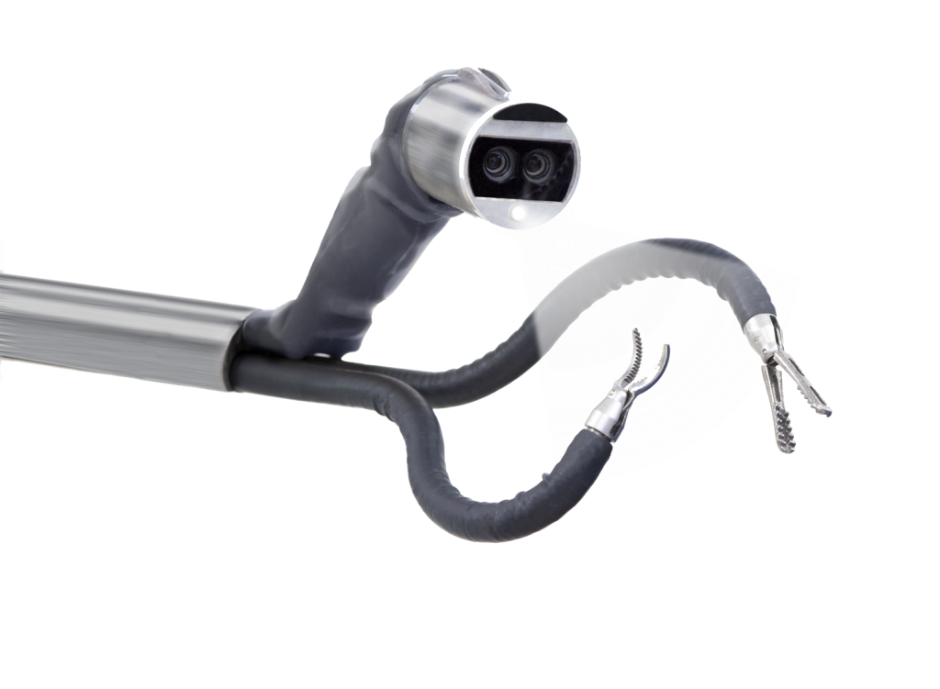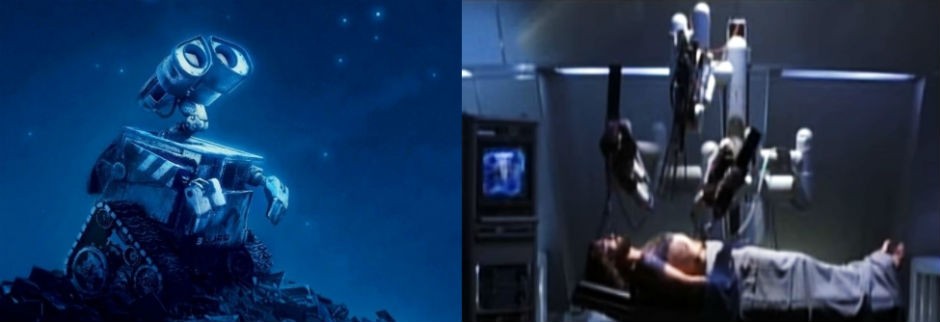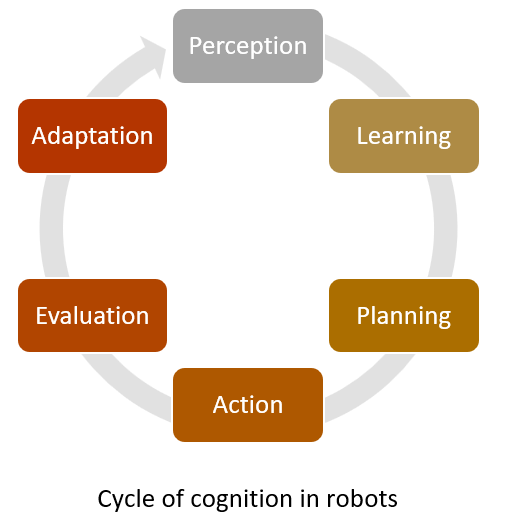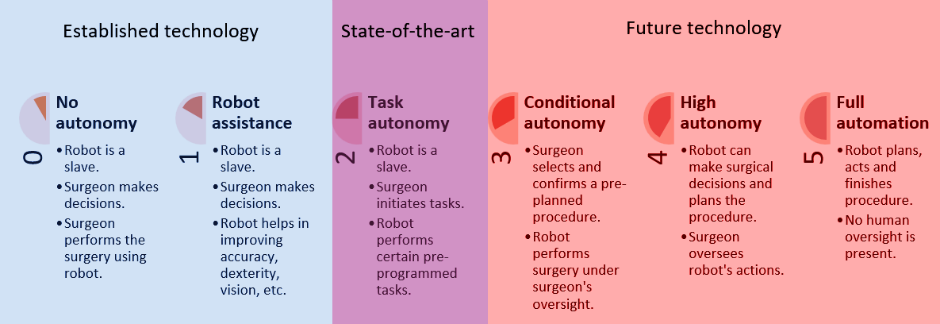Amir Hooshiar received his Bachelor's and Master's in Biomedical Engineering with Honours from Amirkabir University of Tehran, Iran. He served as a Certified Medical Devices Expert for nine years before joining Concordia. Amir is a Vanier Scholar and the recipient of the prestigious NSERC Gilles-Brassard Doctoral Prize for Interdisciplinary Research in 2018. His doctoral research is under supervision of Dr. J. Dargahi on recreating tactile sensing and haptic feedback for surgeons during robot-assisted cardiovascular interventional surgery.
Blog post
Robotic surgery and surgical robots
 Credit: Titan Medical Inc.
Credit: Titan Medical Inc.
Haah… good old days. I remember watching Paul Verhoeven’s RoboCop (1987) when I was in fourth grade (1995). You are right, RoboCop is not G-rated, and I wasn’t supposed to. Anyhow, RoboCop formed my first impression of a robot. For some others, R2-D2 from George Lucas’s Star Wars (original, 1977) might have been the first impression of a robot.
The first appearance of a real surgical robot in a movie before public eyes was in 2002 when Da-Vinci surgical robot (Intuitive Surgical, CA) was drawing blood from James Bond in Die Another Day.
But seriously, how accurate are these fantasized images? Are real robots as agile, invincible, self-repairing, and self-sufficient as those pictured in the movies? More importantly, is a robot fundamentally able to bestow LOVE, like the cute Wall-E? Or even less, is it able to make decisions, like choosing between "to cut" or "to knot" during a surgery? Plain sad truth, NOT YET. One may think, okay then, what is the notion of "surgical robots" on this ground? Or is the everyday media propaganda on the ground-breaking advancements in robotic surgery "FAKE NEWS?"
 Left: Wall-E (from Wall-E, Andrew Stanton, 2008). Right: Da-Vinci robot drawing blood from James Bond (from Die Another Day, Lee Tamahori, 2002)
Left: Wall-E (from Wall-E, Andrew Stanton, 2008). Right: Da-Vinci robot drawing blood from James Bond (from Die Another Day, Lee Tamahori, 2002)
In order to answer these doubts and to distinguish between reality and fantasy, I have planned to share my insights with you in a series of five blogs. In my blogs, I will cover the characteristics of surgical robots, as well as the current state-of-the-art and future trends in robotic surgery.
In this blog, I will describe four fundamental characteristics of robots: programmability, mobility, cognition, and feedback in the context of the surgical application. Knowledge of these characteristics, I believe, is essential for differentiating between myth and truth.
Programmability makes robots different from machines
We all use different electromechanical machines routinely. Automobiles, blow-dryers, elevators, and drills are just a few palpable examples. One could imagine every single tool available at Home Depot as a machine. Not all of them are robots, though.
The most important differentiator between a machine and a robot is programmability. We use machines for their intended applications, while a robot is intended to be used in different applications. This happens through programming a robot. For example, a drill always makes holes, a sewing machine sews, and no one could imagine a sewing machine making muffins! However, you can watch a UR5 robot making delicious German BratWursts here, handling fabrics in garment sewing here, and inserting an endoscope into a manikin’s belly, here. The difference in application is just about programming.
Mobility differentiates robots from computers
Programmability is not an exclusive property of robots. Computers and advanced calculators are also programmable. Similarly, mobility is not a unique characteristic of robots. However, the two combined, make a robot unique: mobile programmable creature.
Mobility is the extent of the ability of a robot to move or access the space around it. In terms of mobility, robots vary from fully-mobile, e.g. Atlas humanoid (Boston Dynamics, MA, US), to stationary, e.g. MYNUTIA eye surgery robot (Mynutia, Belgium).
Cognition is the ability of a robot to perceive, learn, plan, act, evaluate and adapt
How hideous is a programmable mobile creature without a brain! It reminds me of those dumb alien robots in Star Wars, flying around, lasing at no target and finally smashing into another.
Cognition is a process starting from perception or sensing. Different chemical or electromechanical sensors could be used for this purpose, e.g. temperature, pressure, position sensor, etc. Based on the extent of utilizing sensors for acquiring data, robots are categorized as self-aware and/or periphery-aware. Knowledge of its own state, e.g. position, location, speed, etc. makes a robot self-aware; while, knowledge of its surroundings, e.g. temperature, size, location, distance, etc. makes a robot periphery-aware.

Following the perception, comes learning. Learning is the process of finding the repeatable response of environment to certain actions of the robot. For example, a surgical robot may learn if I push this needle so hard it pierces the kidney.
When a robot understands the consequences of a particular action programmatically, it could plan to obtain specific outcomes or avoid others. For instance, a cardiac surgery robot learns how to press needle into the heart tissue to pierce it enough for suturing, while preventing laceration and excessive tear. A more complex robot, say doing a surgery on lungs, learns to adapt its maneuvers based on the respiratory motions of the lungs.
Intelligence is a result of cognition. I would define robotic intelligence as the full cognition cycle as depicted above. However, the word intelligence is overused and overlooked, I believe. Most people imagine a robot like R2-D2 or RoboCop when they hear intelligent robot. Intelligence leads to decision-making and autonomy. Intelligence and autonomy have been the biggest fears of a group of intellectuals, e.g. Elon Musk. An elite group of pioneers in the field of surgical robotics have proposed the following classification for surgical robots in terms of autonomy, (source). Based on their postulations, our current state-of-the-art is far from fully-autonomous surgical robots.

… and finally, feedback is necessary for us to supervise a robot’s actions
A robot usually works remotely from its supervisor/controller/operator. Therefore, a continuous stream of data reporting its own and peripheral conditions is necessary for safe and effective maneuvers. For a surgical robot, a patient’s vital signs, the mechanical pressure of the robot on the patient, the softness of the tissue the robot is touching, the size and location of bumps, lumps or tumors are a few examples of feedbacks.
Since palpation plays a crucial role in manual surgery for the identification of different tissues, and since it is not present in robotic surgery, tactile (sense of touch) and haptic (perception of motion in joints) feedbacks are of utmost importance for surgical robots. There are various types of sensors and systems for transferring these feedbacks to the hands of surgeon.
Robo-surgeon fiction or truth?
In this blog, I introduced the four main characteristics of a robot and elaborated on them with examples from the realm of surgical robots. Back to the original question, in the current state-of-the-art, a surgical robot is a programmable, mobile, and intelligent machine capable of giving live feedback to a surgeon which can only serve as a simple tool or a supervised assistant in handling surgical instruments. The truth is…any expectation beyond that is yet a far-fetched dream.
My next blog will be on the treatments performed with surgical robots, pros and cons of such treatments, and a brief introduction to the big shot companies designing and developing surgical robots.
About the author
